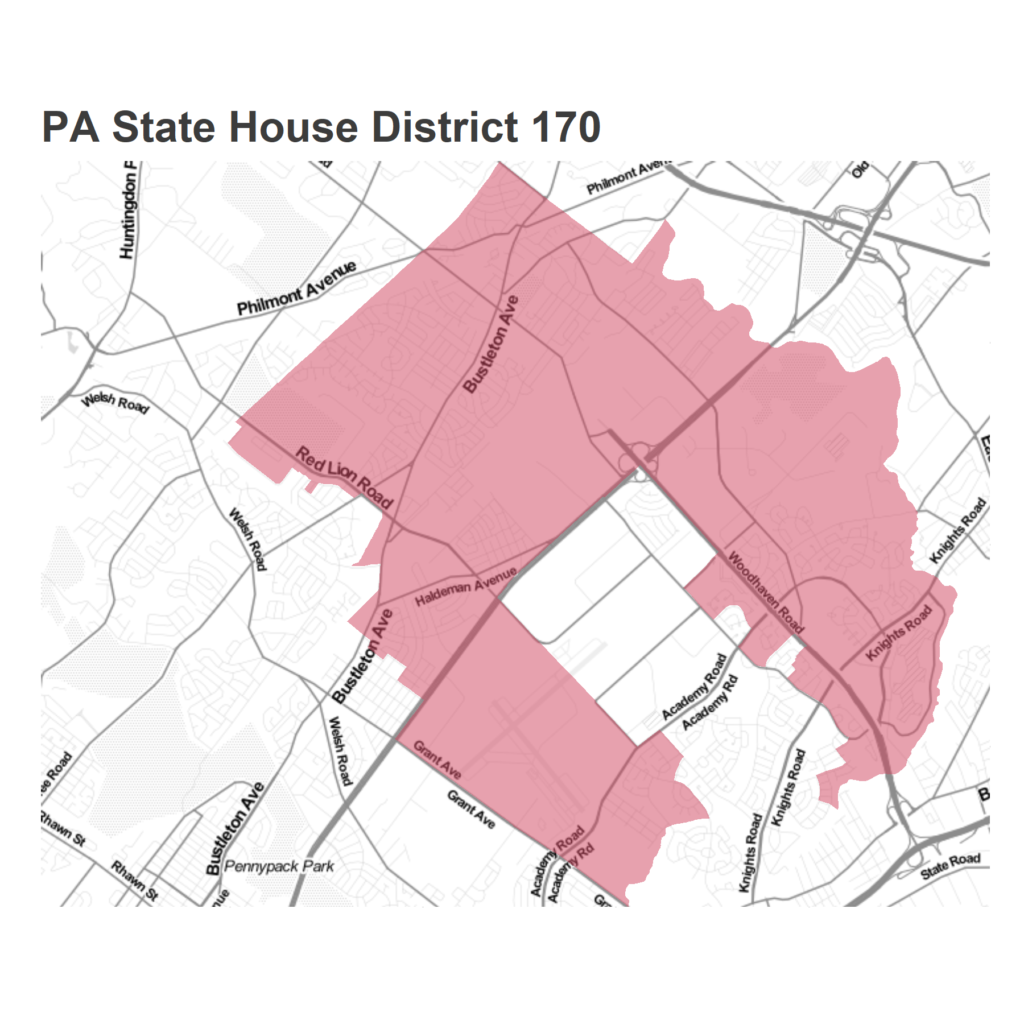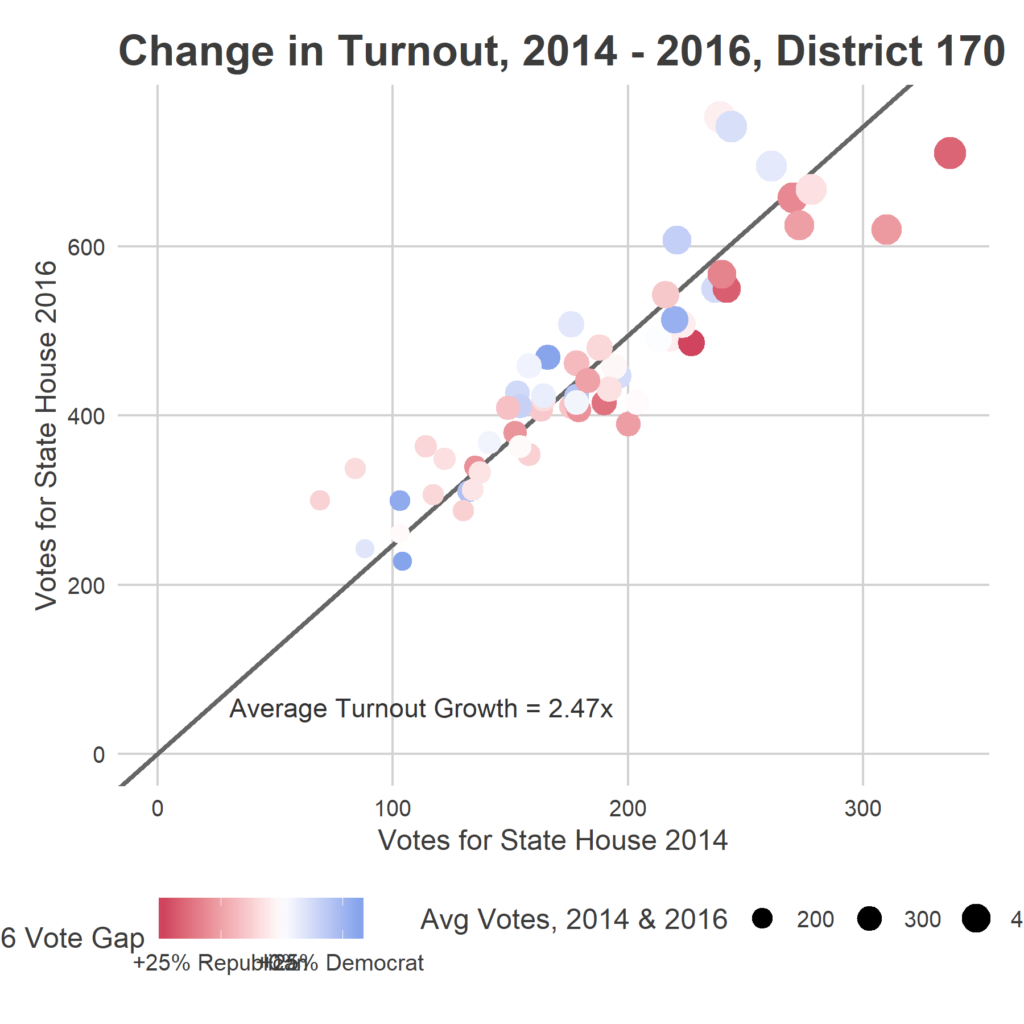Democrats need to pick up 20 seats to tie up the PA House, and 19 districts currently held by Republicans voted for Clinton in 2016. All of them are in the Philadelphia region. I’ve profiled Delco’s District 168, Philadelphia’s District 177 and Bucks’ District 178.
Today, let’s look at Northeast Philly’s 170, famous for representative Martina White, who friends call Philadelphia Republicans’ It Girl, and foes call “Trump in Pennsylvania“.
White in being challenged by Mike Doyle, who touts his DSA membership and . The contrast couldn’t be starker.
District 170
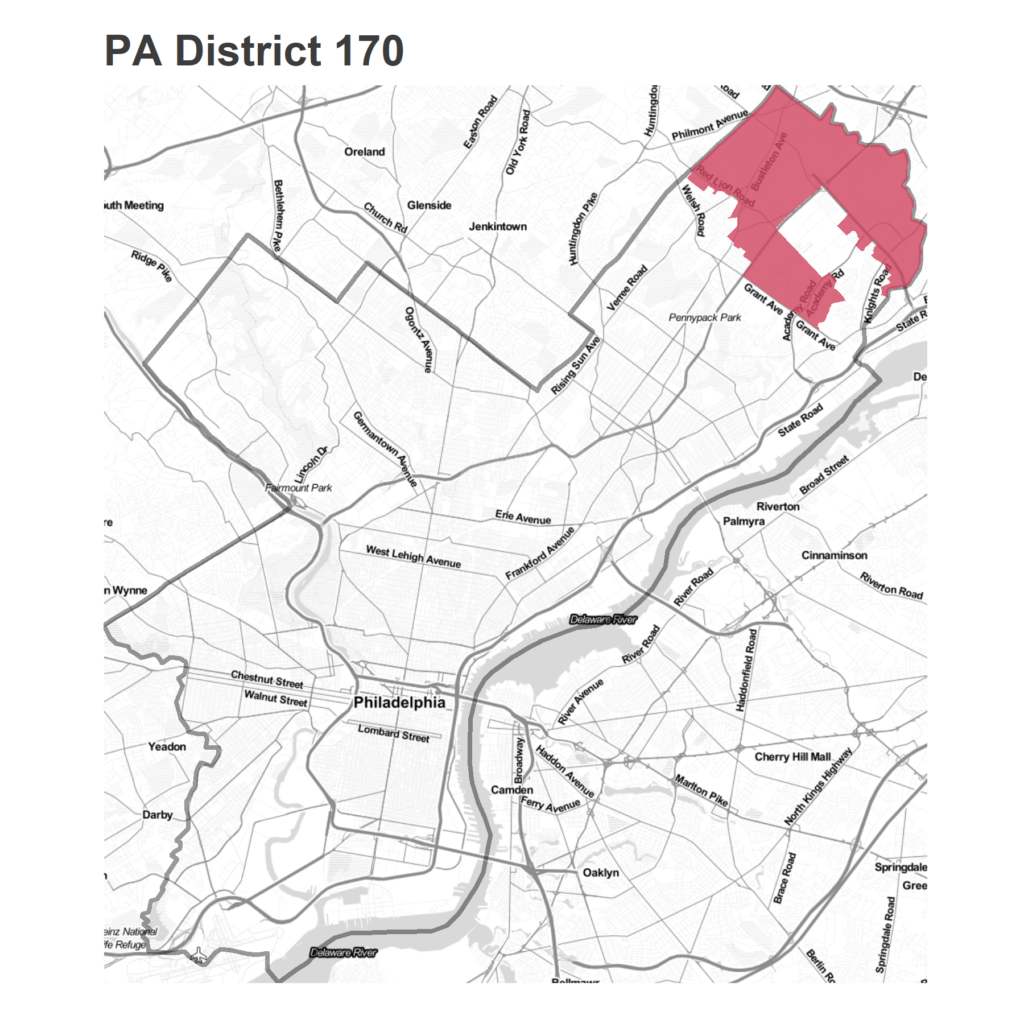 |
|
White was first elected in March 2015, taking over the seat after Democrat Brendan Boyle was elected to Congress. She won by 12 points, and then defended the seat in 2016, winning by 8. The whole district was relatively Trump-y in 2016, and represents the closest Philadelphia gets demographically to Trump’s base. With that being said, “relatively Trump-y” in Philadelphia means that Clinton still won the district, by less than a point.
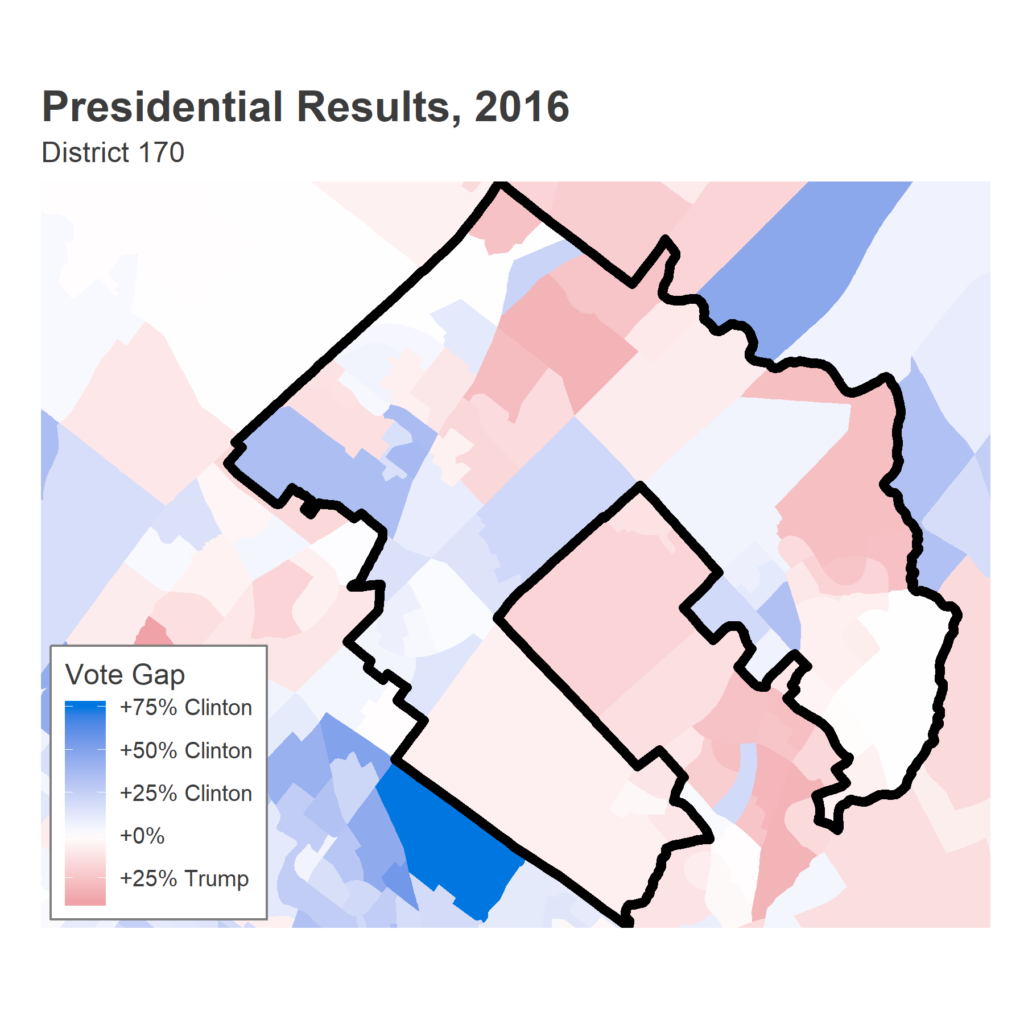 |
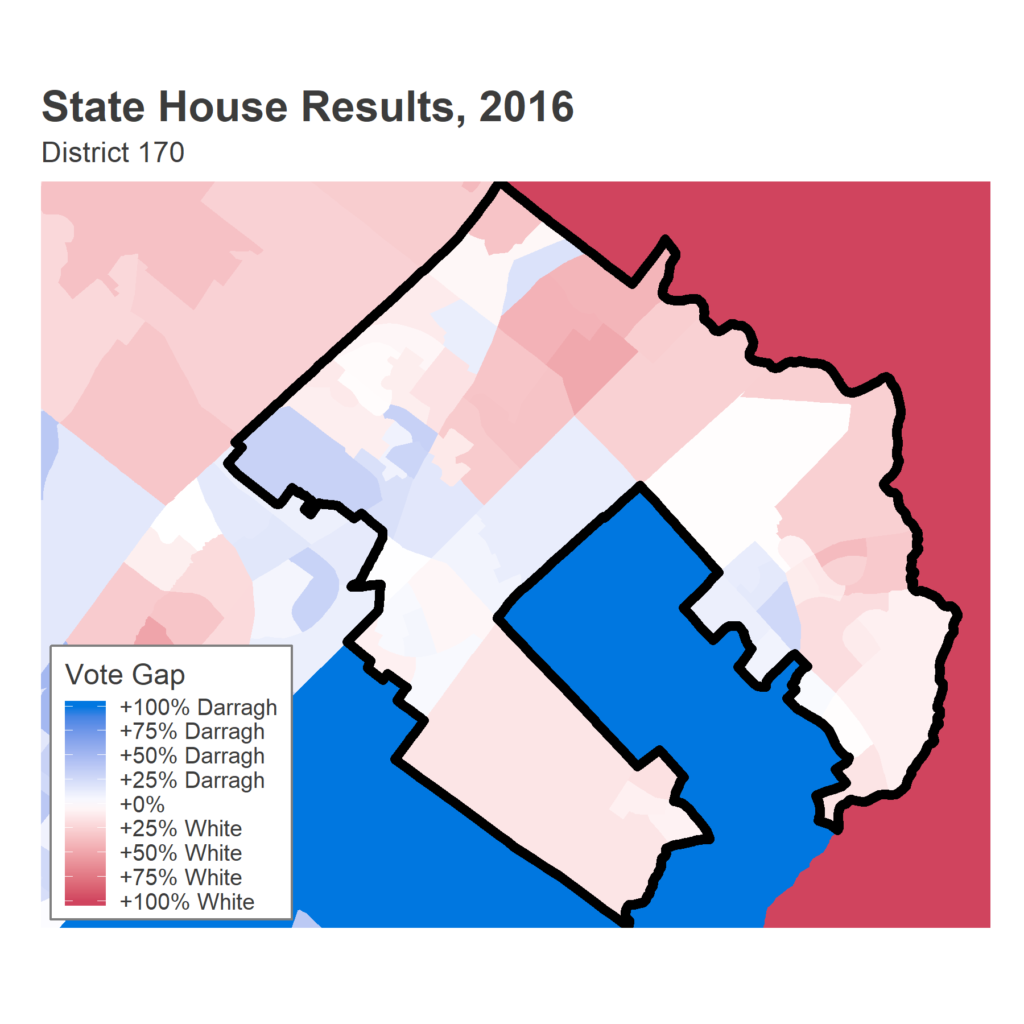 |
In 2016, White won the state house race 54 – 46, while Clinton won the two-party vote 50.4 – 49.6. Bustleton, in the West of the district, is the bluest of the region, while Somerton above it is the reddest.
All but four Divisions in the district voted more for White than for Trump. November could be a litmus test for whether distaste for Trump has begun to spread to the rest of the party, and especially an outspoken anti-Sanctuary City candidate like White.

Most of the votes in the district come from the broad West of Bustleton and Somerton, and the small, dense residential region in the East, surrounding Franklin Mills.
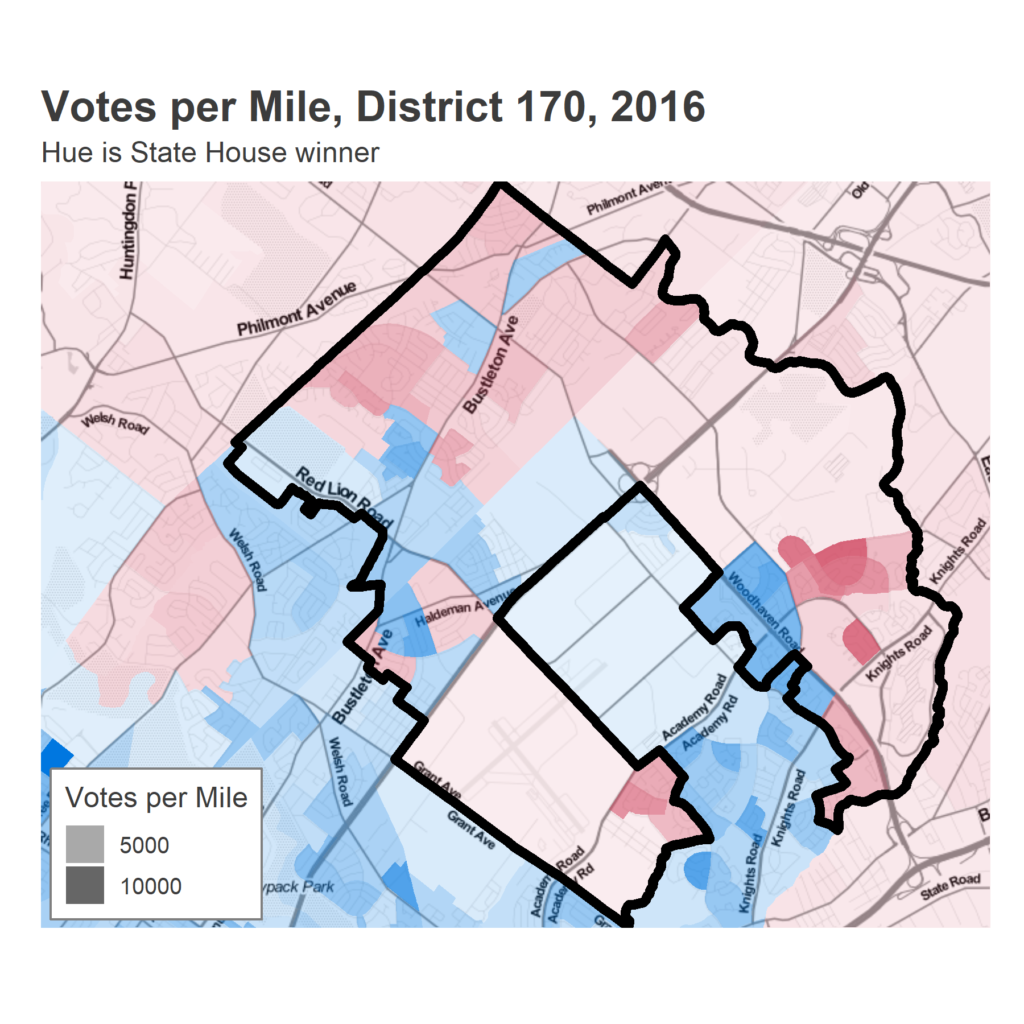
The district is heavily non-Hispanic White, with the population relatively evenly spread once you factor out the airport and Benjamin Rush Park.
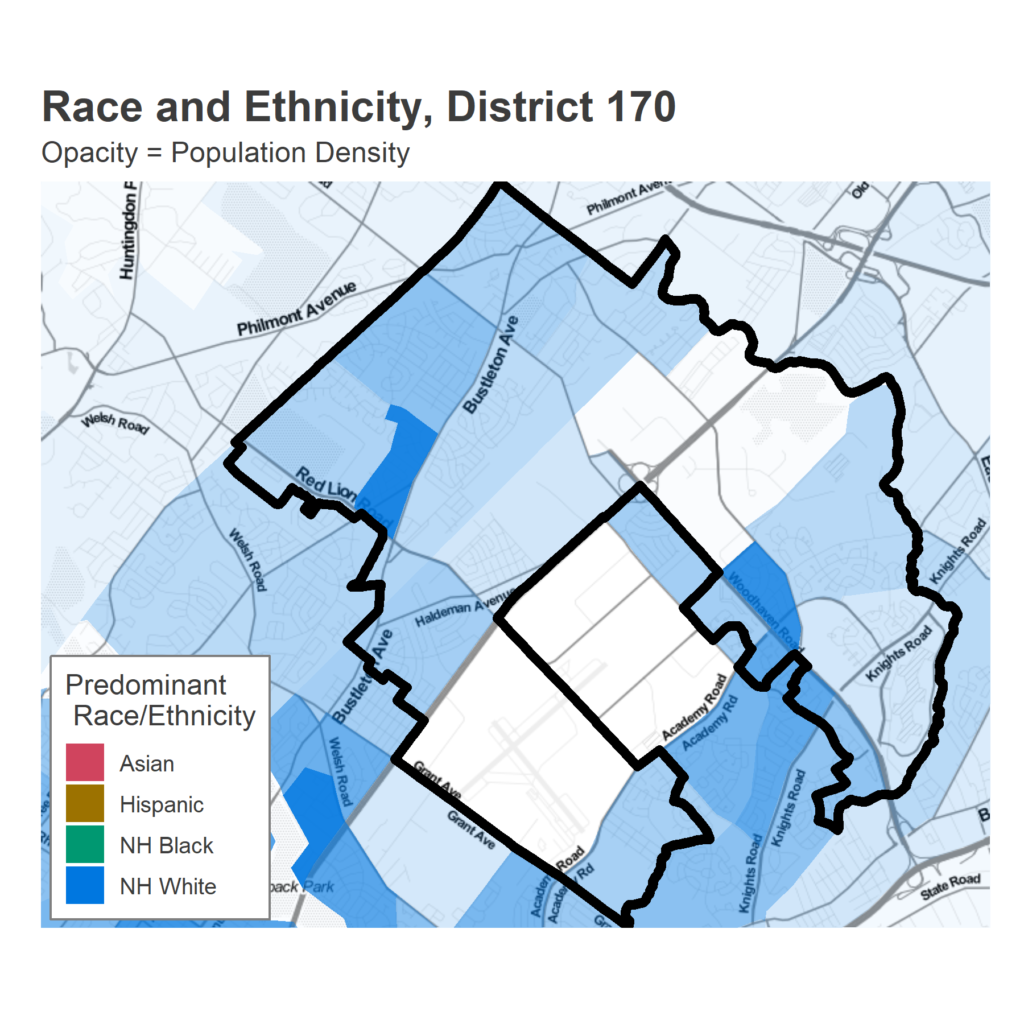
The district is relatively evenly distributed between moderately Democratic and moderately Republican, compared to others. While it was 46% Democratic in 2016, every single Division voted more than 26% and less than 66% Democratic, with no extremes.
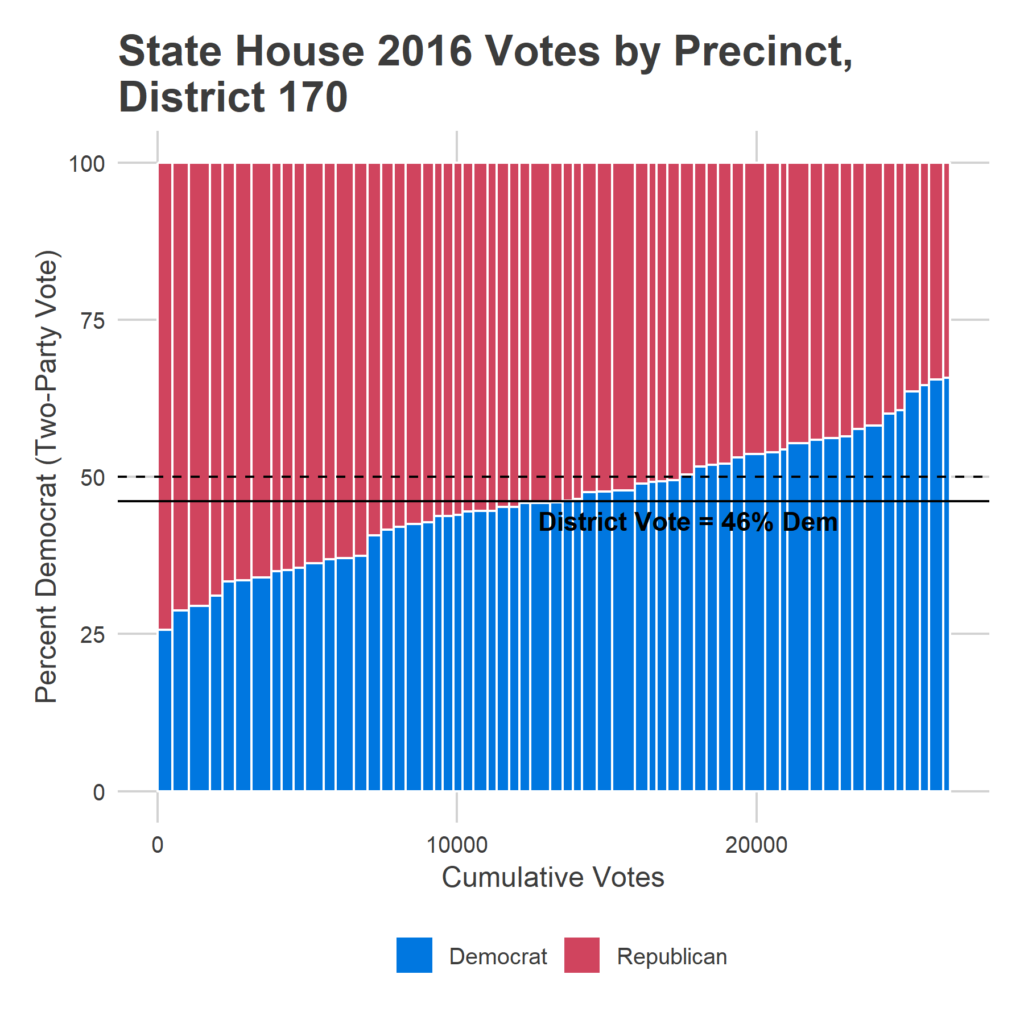
Even in such a homogenous district, turnout in midterm years typically favors republicans. While turnout grew between 2014 and 2016 by 2.47x overall, it grew by substantially less than that in the largest Republican district, and by more than that in the largest Democratic ones. This doesn’t necessarily mean the Democrats were more mobilized in 2016, but probably that the Republicans were just already voting in 2014.
This district will likely be a lightning rod in November, as White has become a symbol of Trumpism within Philadelphia’s borders.
Sources:
Election data from www.philadelphiavotes.com
Population data from the 2016 American Community Survey 5-year estimates.
Boundaries and GIS data from www.opendataphilly.org
Base maps provided by maps.stamen.com/
